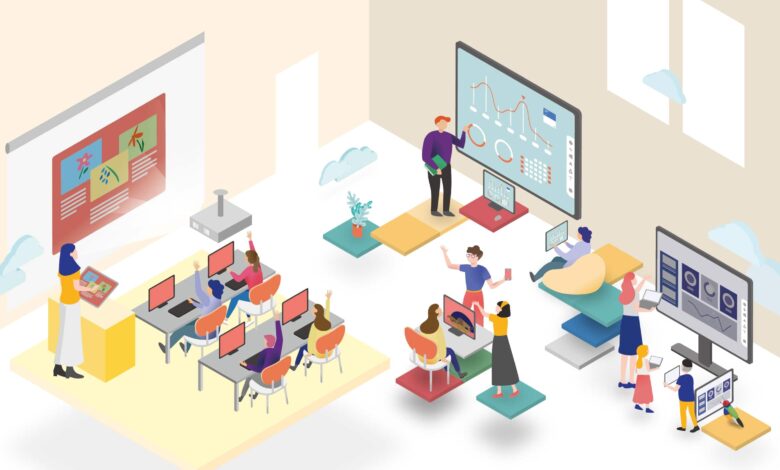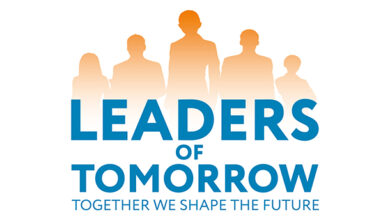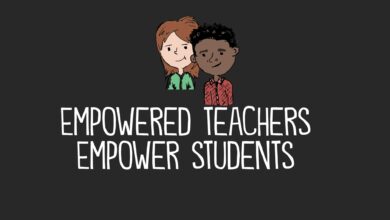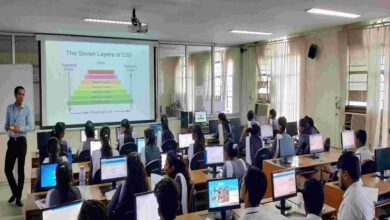Incorporating Technology in the Classroom

Introduction
In today’s digital age, technology has become an integral part of education, transforming traditional classrooms into dynamic learning environments. By incorporating technology into teaching practices, educators can enhance student engagement, facilitate personalized learning experiences, and prepare students for success in a technology-driven world. In this blog post, we’ll explore the benefits of integrating technology in the classroom and provide practical tips for effective implementation.
Enhancing Learning Opportunities
Technology opens up a world of possibilities for enhancing learning opportunities inside and outside the classroom. Interactive whiteboards, educational apps, multimedia presentations, and online resources provide students with access to a wealth of information and resources beyond the confines of textbooks. Virtual simulations, augmented reality, and virtual reality experiences offer immersive learning experiences that bring abstract concepts to life and foster deeper understanding.
Personalized Learning Experiences
Technology enables educators to tailor instruction to meet the diverse needs and preferences of individual students. Adaptive learning platforms, personalized learning pathways, and online assessments allow teachers to differentiate instruction based on students’ abilities, interests, and learning styles. By providing personalized feedback and adaptive learning experiences, technology empowers students to progress at their own pace and reach their full potential.
Fostering Collaboration and Communication
Technology facilitates collaboration and communication among students and teachers, breaking down geographical barriers and promoting global connectivity. Online discussion forums, collaborative document editing tools, video conferencing platforms, and social media networks enable students to collaborate on group projects, share ideas, and communicate with peers and experts from around the world. Digital communication tools also facilitate ongoing communication between teachers, students, and parents, fostering a sense of community and support.
Developing Digital Literacy Skills
Integrating technology in the classroom helps students develop essential digital literacy skills that are critical for success in the 21st century. By navigating digital interfaces, conducting online research, evaluating information sources, and utilizing productivity tools, students become proficient in using technology as a tool for learning, communication, and collaboration. Digital literacy skills prepare students for future academic and career opportunities in an increasingly digital and interconnected world.
Promoting Creativity and Innovation
Technology empowers students to express their creativity and innovation through multimedia projects, digital storytelling, coding activities, and design challenges. Creative tools such as graphic design software, video editing applications, and programming platforms provide students with opportunities to explore their interests, experiment with new ideas, and showcase their learning in engaging and interactive ways. By encouraging creativity and innovation, technology fosters a culture of lifelong learning and adaptability.
Ensuring Equitable Access
It is essential to ensure equitable access to technology for all students, regardless of their background or socioeconomic status. Schools must invest in infrastructure, devices, and internet connectivity to bridge the digital divide and provide equal opportunities for learning. Collaborating with community partners, leveraging government funding, and exploring innovative financing models can help schools overcome barriers to access and ensure that all students have the tools they need to succeed in a technology-rich learning environment.
Conclusion
Incorporating technology in the classroom offers numerous benefits for students and educators alike, from enhancing learning opportunities and personalizing instruction to fostering collaboration and creativity. By embracing technology as a tool for teaching and learning, educators can prepare students for success in an increasingly digital and interconnected world. However, it is crucial to approach technology integration thoughtfully and purposefully, ensuring equitable access and providing ongoing support and professional development for educators. Together, we can harness the power of technology to create engaging, inclusive, and innovative learning environments that inspire and empower students to reach their full potential.












